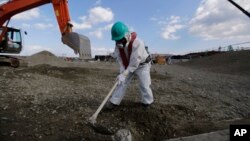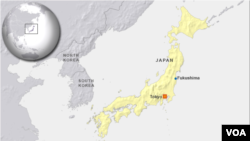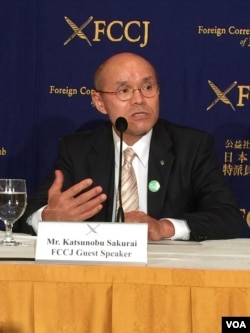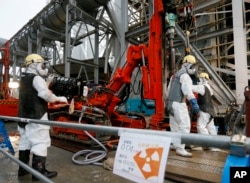Experts say Japan's nuclear energy problems are worsening, five years after a massive earthquake unleashed a tsunami that melted down the island nation's nuclear reactors.
Nine million cubic meters of radioactive waste, much of it soil, are stored unsheltered in black bags throughout Fukushima prefecture, preventing tens of thousands of residents from returning home.
And the problem is going to worsen before it improves.
An estimated 13 million cubic meters of toxic soil is yet to be collected and technicians have yet to solve the contamination issue inside the Fukushima-1 Nuclear Power Plant. Government and industry officials acknowledge cleaning everything up -- including decommissioning the crippled reactors -- will take at least another 40 years and cost as much as $250 billion.
And that timeline and the costs – considered overly optimistic by some industry experts – are based on nothing major going wrong.
If another major earthquake hits and results in a tsunami, there will be major setbacks, admits the nuclear plant’s manager, Akira Ono.
Thousands of workers are dedicated to keeping under control the plant’s six reactors, four of which either melted down or were severely damaged.
Japan has never decommissioned a nuclear reactor, much less reactors as damaged as those at Fukushima.
It has resisted offers from foreign companies to help formulate an adequate cleanup plan.
“Unfortunately the cleanup effort continues to suffer from an inability to face the long-term decisions that have to be made in order to develop and implement an efficient plan,” said former U.S. diplomat Kevin Maher, who was running the State Department’s Japan desk when the earthquake struck.
The cleanup plan, he argues, should be driven by where to ultimately dispose the contaminated debris, fuel and water.
“Instead, Tokyo Electric Power Company (TEPCO) continues to delay those decision, so we see the continual buildup of more stored water, because TEPCO can't decide what to do with it. An experienced program management company could make those decisions,” said Maher, a senior advisor at NMV Consulting in Washington.
Even if Fukushima residents with homes inside the exclusion zone are allowed to return, the thousands of bags of radioactive soil in the prefecture may give them pause.
“There is still lingering fear about radiation among the younger people who left the city,” according to Katsunobu Sakurai, mayor of Minamisoma, which had a population of 71,000 when the disaster struck.
About 57,000 people have returned to Sakurai’s city, but few of the children or those of working age have come back. (More than 1,000 of Minamisoma’s residents perished in the earthquake and tsunami, as well as deaths attributed to the chaos of the mandatory evacuation.)
The mayor notes that in adjacent villages encompassing 76,000 people, only about 5,000 residents have returned because of concerns about the radiation levels, which Sakurai said widely vary.
The black bags of radioactive soil – now scattered at 115,000 locations across in Fukushima – are eventually to be moved to yet-to-be built interim facilities, encompassing 16 square kilometers, in two towns close to the crippled nuclear power plant.
Authorities say the temporary storage sites are to hold the contaminated material for no more than 30 years before it is processed in a different prefecture, which has yet-to-be-named.
But issues with owners who do not want to sell their properties, or with clearing titles for other land needed to build the temporary sites likely mean it will take many years for all those hurdles to be cleared, according to observers.
The question of whether Fukushima can ever be adequately decontaminated is also an open one.
Japan’s environment minister has had to walk back remarks she made about the government’s decontamination target.
Tamayo Marukawa last Friday apologized for saying the government aimed to reduce the radiation level near the Fukushima-1 plant to an annual dose of one millisievert or less, a goal that has no scientific basis. (The average yearly human dose globally from naturally occurring sources is about three times that amount, according to scientists.)
The decontamination goal was set by the previous government, led by the Democratic Party of Japan, as requested by the Fukushima prefectural government.
Minamisoma Mayor Sakurai, speaking Wednesday in Tokyo at the Foreign Correspondents' Club of Japan, chastised the administration of Prime Minister Shinzo Abe for getting its priorities wrong since the 2011 disaster.
"Economy, economy, economy," the mayor asserted, is the central government's mantra. But for the politicians in the beleaguered Fukushima communities in the midst of an unprecedented nuclear decontamination project and focused on recovery and rebuilding, Sakurai said "we are holding the lives of the citizens in our hands."
More than 18,000 are confirmed to have died or still listed as missing from the 2011 quake and subsequent tsunami.












